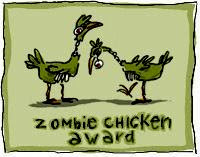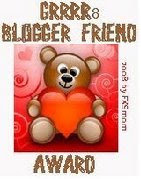Anyone following my travel blog will have read that I was interviewed for Des Spiegel who commissioned a photographer to take some photographs. I was intrigued by the photographer who took far too many pictures for the one shot needed for the article. This is what my collegue and friend Emma read about him:-


Never discount the role of luck in creative endeavours. One evening in October 1988, just after the successful launch of the Independent Magazine in London, I decided to tidy my desk, a more-or-less hopeless task. It was late and I should have been at home, The phone rang and the man at reception told me there was a foreign gentleman downstairs who wanted to show me some photographs. My heart sank; I asked to speak to him. He told me he was from Poland, and I relented, For some reason, I have always been fascinated by Poland, by its turbulent history, by the sardonic edge to its national character, by its films and its graphic design. Krassowski, as I often refer to him, entered. He was taller than me, and I am tall. His moustache was thinner than mine; I thought he looked like a Polish cavalry officer. He produced a small, rather unimpressive-looking portfolio, full of modest-sized prints. The images were all about life in Poland, many of them dark and brooding, others very witty indeed. Every picture I looked at was immediately interesting, revealing, and beyond all that, clearly the product of one consistent creative "eye". I asked this tall talented stranger what he was doing in London. He told me with a straight face that he was painting houses, I was flabbergasted - this was shortly after a film called "Moonlighting" had been shown in London, about a group of illegal Polish immigrants who get smuggled into England to paint houses, I told Krassowski it was ridiculous for him to work as a decorator - he had to take photographs. But my cunning picture editor's reflexes were at work, late though the hour was. Mrs Thatcher, our esteemed Prime Minister at that time, was about to make another of her "royal" visits, to Poland no less, Bingo ! - we could publish a selection of Krassowski's work to give our readers a very personal flavour of the country and its people. Not only that, but the magazine wouldn't have to spend money sending a photographer, because the story had fallen right into our lap. Such are the machinations that dominate the lives of even the best photo editors, Nonchalantly, I asked Krassowski to leave his work with me for a couple of days, and it wasn't difficult to persuade my editor to agree to publish the photographs. Everyone on the magazine was excited by their freshness of vision. But I do recall having some difficulty in tracking down this elusive house painter to tell him the good news, And though in our subsequent eight-year friendship, I don't remember Witek ever expressing anything you might mistake for excitement, I swear I detected a fractional intake of breath when I told him on the phone what he would be paid for the reproduction rights to his work, a substantial sum which amounted to an awful lot of house painting in 1988. We published the photo essay on Poland and it was a great success. I instructed Krassowski to hang up his painting brush and return to his Leica. Soon afterwards, I commissioned him to photograph an area of England called The Fens. This was a sneaky, underhand trick on my part, because this region has a reputation for being flat, dull and populated by suspicious, unfriendly and possibly inbred inhabitants, Most British photographers would laugh derisively if you suggested they do a photo story on The Fens. Witek, of course, knew nothing of this, and I did not propose to enlighten him. I'told him he would have to drive to The Fens because public transport was virtually non-existent, I believe this is the only time I have ever seen him disconcerted, indeed the shadow of a frown crossed his brow. Driving out of London is a nightmare even for Londoners. "Impossible", he stated with finality. I cajoled, he haggled. Eventually, we compromised; he would take the train to Cambridge and then hire a car at the station. A long time afterwards, I discovered that he had only recently passed his driving test in Poland, and had never really driven anywhere at all. I was going to throw him into the deep end.
Of course, the story on The Fens went well. Krassowski produced some excellent photographs, including one of my favourites, a man who grows vegetables in a graveyard. He survived Britain's roads, and as far as I know, the hire car survived him.
When Witek is working, he is serious, intense, probably obsessed. And he knows when he's got a good picture. I've never met anyone who is as hard on himself, and on others, too. "It's just anecdote" or "It's boring" - the ultimate put-down, with a slight curl of his moustached lips. He can afford this arrogance, because when he's on song, his work touches the soul. Looking at his photographs on Britain, I know exactly where I am; I recognise straight away their authenticity, their accuracy. But the power of Krassowski's work is in its simplicity, its distilled impact. He does not seek to place his ego between the viewer and what is viewed, making clever constructions or "significant" interpretations. He observes, pounces and portrays, presenting the altogether familiar in a completely fresh and surprising way. He makes it all look so effortless, the sign of a true artist.
Colin Jacobson If you aren't following my travel blog and would like to follow the whole story you can either simply click on the link on the side bar of this blog or go to
.

 Never discount the role of luck in creative endeavours. One evening in October 1988, just after the successful launch of the Independent Magazine in London, I decided to tidy my desk, a more-or-less hopeless task. It was late and I should have been at home, The phone rang and the man at reception told me there was a foreign gentleman downstairs who wanted to show me some photographs. My heart sank; I asked to speak to him. He told me he was from Poland, and I relented, For some reason, I have always been fascinated by Poland, by its turbulent history, by the sardonic edge to its national character, by its films and its graphic design. Krassowski, as I often refer to him, entered. He was taller than me, and I am tall. His moustache was thinner than mine; I thought he looked like a Polish cavalry officer. He produced a small, rather unimpressive-looking portfolio, full of modest-sized prints. The images were all about life in Poland, many of them dark and brooding, others very witty indeed. Every picture I looked at was immediately interesting, revealing, and beyond all that, clearly the product of one consistent creative "eye". I asked this tall talented stranger what he was doing in London. He told me with a straight face that he was painting houses, I was flabbergasted - this was shortly after a film called "Moonlighting" had been shown in London, about a group of illegal Polish immigrants who get smuggled into England to paint houses, I told Krassowski it was ridiculous for him to work as a decorator - he had to take photographs. But my cunning picture editor's reflexes were at work, late though the hour was. Mrs Thatcher, our esteemed Prime Minister at that time, was about to make another of her "royal" visits, to Poland no less, Bingo ! - we could publish a selection of Krassowski's work to give our readers a very personal flavour of the country and its people. Not only that, but the magazine wouldn't have to spend money sending a photographer, because the story had fallen right into our lap. Such are the machinations that dominate the lives of even the best photo editors, Nonchalantly, I asked Krassowski to leave his work with me for a couple of days, and it wasn't difficult to persuade my editor to agree to publish the photographs. Everyone on the magazine was excited by their freshness of vision. But I do recall having some difficulty in tracking down this elusive house painter to tell him the good news, And though in our subsequent eight-year friendship, I don't remember Witek ever expressing anything you might mistake for excitement, I swear I detected a fractional intake of breath when I told him on the phone what he would be paid for the reproduction rights to his work, a substantial sum which amounted to an awful lot of house painting in 1988. We published the photo essay on Poland and it was a great success. I instructed Krassowski to hang up his painting brush and return to his Leica. Soon afterwards, I commissioned him to photograph an area of England called The Fens. This was a sneaky, underhand trick on my part, because this region has a reputation for being flat, dull and populated by suspicious, unfriendly and possibly inbred inhabitants, Most British photographers would laugh derisively if you suggested they do a photo story on The Fens. Witek, of course, knew nothing of this, and I did not propose to enlighten him. I'told him he would have to drive to The Fens because public transport was virtually non-existent, I believe this is the only time I have ever seen him disconcerted, indeed the shadow of a frown crossed his brow. Driving out of London is a nightmare even for Londoners. "Impossible", he stated with finality. I cajoled, he haggled. Eventually, we compromised; he would take the train to Cambridge and then hire a car at the station. A long time afterwards, I discovered that he had only recently passed his driving test in Poland, and had never really driven anywhere at all. I was going to throw him into the deep end.
Of course, the story on The Fens went well. Krassowski produced some excellent photographs, including one of my favourites, a man who grows vegetables in a graveyard. He survived Britain's roads, and as far as I know, the hire car survived him.
When Witek is working, he is serious, intense, probably obsessed. And he knows when he's got a good picture. I've never met anyone who is as hard on himself, and on others, too. "It's just anecdote" or "It's boring" - the ultimate put-down, with a slight curl of his moustached lips. He can afford this arrogance, because when he's on song, his work touches the soul. Looking at his photographs on Britain, I know exactly where I am; I recognise straight away their authenticity, their accuracy. But the power of Krassowski's work is in its simplicity, its distilled impact. He does not seek to place his ego between the viewer and what is viewed, making clever constructions or "significant" interpretations. He observes, pounces and portrays, presenting the altogether familiar in a completely fresh and surprising way. He makes it all look so effortless, the sign of a true artist.
Colin Jacobson
Never discount the role of luck in creative endeavours. One evening in October 1988, just after the successful launch of the Independent Magazine in London, I decided to tidy my desk, a more-or-less hopeless task. It was late and I should have been at home, The phone rang and the man at reception told me there was a foreign gentleman downstairs who wanted to show me some photographs. My heart sank; I asked to speak to him. He told me he was from Poland, and I relented, For some reason, I have always been fascinated by Poland, by its turbulent history, by the sardonic edge to its national character, by its films and its graphic design. Krassowski, as I often refer to him, entered. He was taller than me, and I am tall. His moustache was thinner than mine; I thought he looked like a Polish cavalry officer. He produced a small, rather unimpressive-looking portfolio, full of modest-sized prints. The images were all about life in Poland, many of them dark and brooding, others very witty indeed. Every picture I looked at was immediately interesting, revealing, and beyond all that, clearly the product of one consistent creative "eye". I asked this tall talented stranger what he was doing in London. He told me with a straight face that he was painting houses, I was flabbergasted - this was shortly after a film called "Moonlighting" had been shown in London, about a group of illegal Polish immigrants who get smuggled into England to paint houses, I told Krassowski it was ridiculous for him to work as a decorator - he had to take photographs. But my cunning picture editor's reflexes were at work, late though the hour was. Mrs Thatcher, our esteemed Prime Minister at that time, was about to make another of her "royal" visits, to Poland no less, Bingo ! - we could publish a selection of Krassowski's work to give our readers a very personal flavour of the country and its people. Not only that, but the magazine wouldn't have to spend money sending a photographer, because the story had fallen right into our lap. Such are the machinations that dominate the lives of even the best photo editors, Nonchalantly, I asked Krassowski to leave his work with me for a couple of days, and it wasn't difficult to persuade my editor to agree to publish the photographs. Everyone on the magazine was excited by their freshness of vision. But I do recall having some difficulty in tracking down this elusive house painter to tell him the good news, And though in our subsequent eight-year friendship, I don't remember Witek ever expressing anything you might mistake for excitement, I swear I detected a fractional intake of breath when I told him on the phone what he would be paid for the reproduction rights to his work, a substantial sum which amounted to an awful lot of house painting in 1988. We published the photo essay on Poland and it was a great success. I instructed Krassowski to hang up his painting brush and return to his Leica. Soon afterwards, I commissioned him to photograph an area of England called The Fens. This was a sneaky, underhand trick on my part, because this region has a reputation for being flat, dull and populated by suspicious, unfriendly and possibly inbred inhabitants, Most British photographers would laugh derisively if you suggested they do a photo story on The Fens. Witek, of course, knew nothing of this, and I did not propose to enlighten him. I'told him he would have to drive to The Fens because public transport was virtually non-existent, I believe this is the only time I have ever seen him disconcerted, indeed the shadow of a frown crossed his brow. Driving out of London is a nightmare even for Londoners. "Impossible", he stated with finality. I cajoled, he haggled. Eventually, we compromised; he would take the train to Cambridge and then hire a car at the station. A long time afterwards, I discovered that he had only recently passed his driving test in Poland, and had never really driven anywhere at all. I was going to throw him into the deep end.
Of course, the story on The Fens went well. Krassowski produced some excellent photographs, including one of my favourites, a man who grows vegetables in a graveyard. He survived Britain's roads, and as far as I know, the hire car survived him.
When Witek is working, he is serious, intense, probably obsessed. And he knows when he's got a good picture. I've never met anyone who is as hard on himself, and on others, too. "It's just anecdote" or "It's boring" - the ultimate put-down, with a slight curl of his moustached lips. He can afford this arrogance, because when he's on song, his work touches the soul. Looking at his photographs on Britain, I know exactly where I am; I recognise straight away their authenticity, their accuracy. But the power of Krassowski's work is in its simplicity, its distilled impact. He does not seek to place his ego between the viewer and what is viewed, making clever constructions or "significant" interpretations. He observes, pounces and portrays, presenting the altogether familiar in a completely fresh and surprising way. He makes it all look so effortless, the sign of a true artist.
Colin Jacobson 



































No comments:
Post a Comment